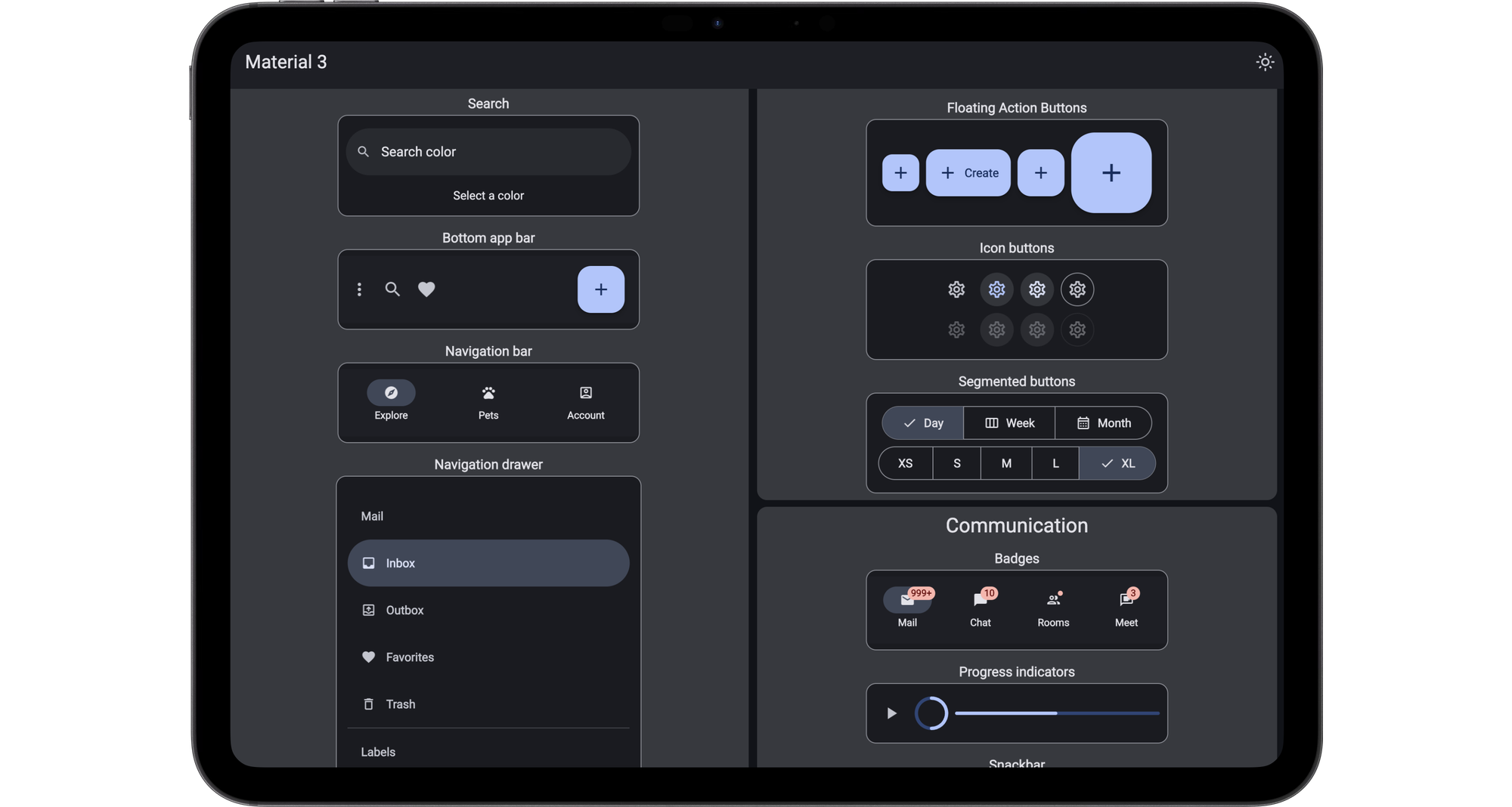Slint + Material Design
Combine Slint's production grade toolkit with everyone's favorite Material Design Components

Features
Not everyone wants to build their own UI components
But every product should have a great design.
Make your product shine
Stand out from the crowd with an award winning design system. Material components arn't just functional, they are beautiful.
Unbelievably easy to develop with
There has never been an easier way to build a Material design product. Slint's simple syntax and powerful tooling will have you shipping in days.
10 years in the making
Build your product with the worlds most used design system. It's been the foundation of Android phones since 2014 and proven in billions of devices.
Build anything - deploy everywhere
Watches, medical devices, in-car infotainment, and more. Material UI components work seamlessly across desktop, mobile, and embedded platforms.
Touch-Optimized
Designed specifically for touch interfaces with appropriate touch targets and gestures.
Customizable Themes
Easy theming with Material Theme builder support, allowing you to match your brand colors and design preferences.
Try Slint + Material Now!
Android user? Download the APK and try the gallery on your phone. Otherwise try out the browser version.
Components
Core Material UI Components
Essential components for building modern Slint applications with Material Design
Multiple button variants including filled, outlined, and tonal styles for different interaction contexts.
Text fields, checkboxes, switches, and other input components for user data collection.
Content containers with elevation and various layouts for displaying information in organized, visually appealing ways.
Modal interfaces for important actions, confirmations, and detailed information that require user attention.
Drawers, navigation rails, and bottom navigation bars for seamless app navigation and structure.
Top-level navigation components with actions, titles, and search functionality for your app's main interface.
Loading spinners and progress bars to provide feedback during operations and data loading.
Brief notifications that appear at the bottom of the screen to provide feedback and confirm actions.
Contextual help and information that appears when users hover or focus on interface elements.